Cult of the Lamb: Leading Your Flock to Glory
Contents
Cult of the Lamb, published by Devolver Digital and developed by Massive Monster, has taken the indie roguelike genre by storm. This captivating title blends fast-paced dungeon crawling with surprisingly deep base-building and management simulation, creating a unique and engaging experience. But does it live up to the hype? Let’s dive in and uncover the strengths and weaknesses of this intriguing title.
A Roguelike for Everyone
Cult of the Lamb thrusts players into a dark, chaotic world ruled by four malevolent Bishops. You play as a possessed lamb, spared from execution by a mysterious imprisoned entity known as “The One Who Waits.” In exchange for your life, you must establish a cult in his name.
Gameplay is split into two distinct parts. The first takes place in the “Land of the Old Faith,” comprised of four procedurally generated dungeons. Here, you embark on crusades, gathering resources and recruiting followers.
![]() Alt: The Lamb fighting enemies in a dark, stylized dungeon with pixelated graphics.
Alt: The Lamb fighting enemies in a dark, stylized dungeon with pixelated graphics.
These dungeons evoke comparisons to Hades, with randomized rooms, enemies, and weapon choices. You’ll encounter helpful NPCs offering Tarot card readings for stat boosts, weapon vendors, and special events unlocking new areas.
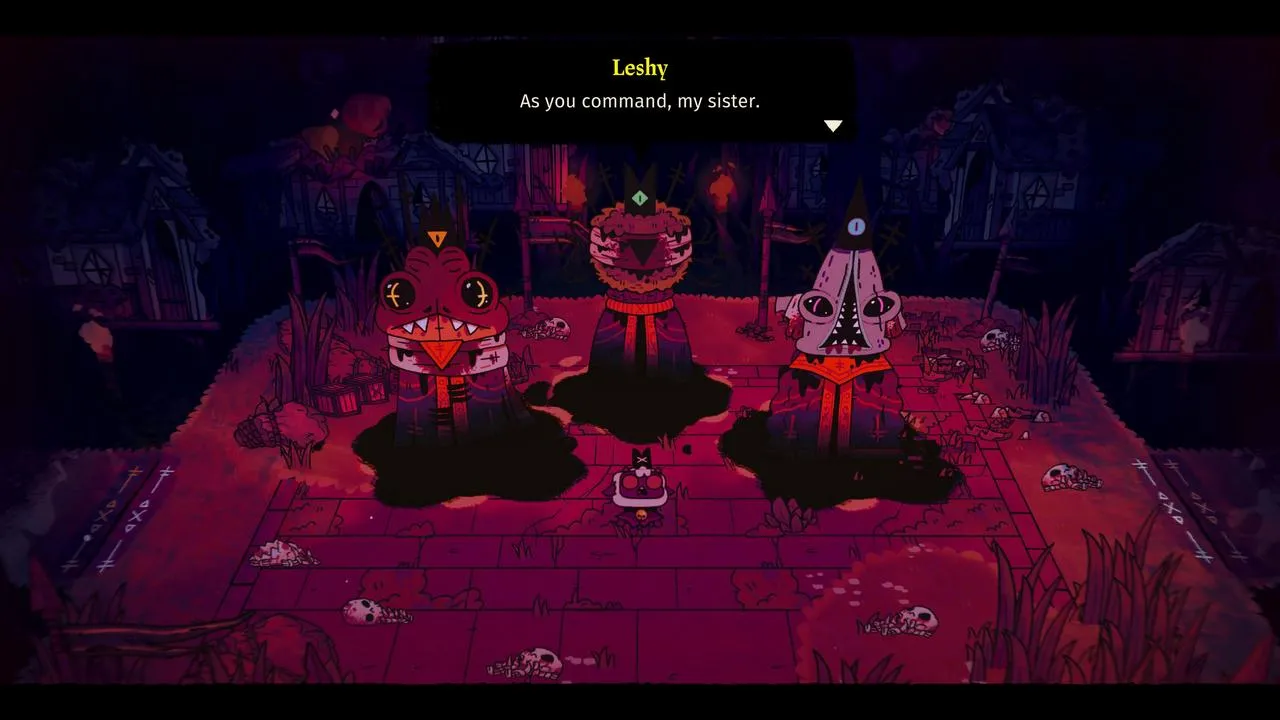 Alt: The Lamb interacting with a Tarot card reader in a dungeon.
Alt: The Lamb interacting with a Tarot card reader in a dungeon.
Combat is simple yet engaging, with melee attacks, a special ability, and a dodge roll. The variety of enemies and fast-paced action keep things exciting. While early dungeon rooms can feel cramped, later areas offer more expansive combat arenas.
The weapon selection focuses on melee combat, with variations in damage and speed. Ranged and area-of-effect attacks are fueled by a resource collected from defeated enemies.
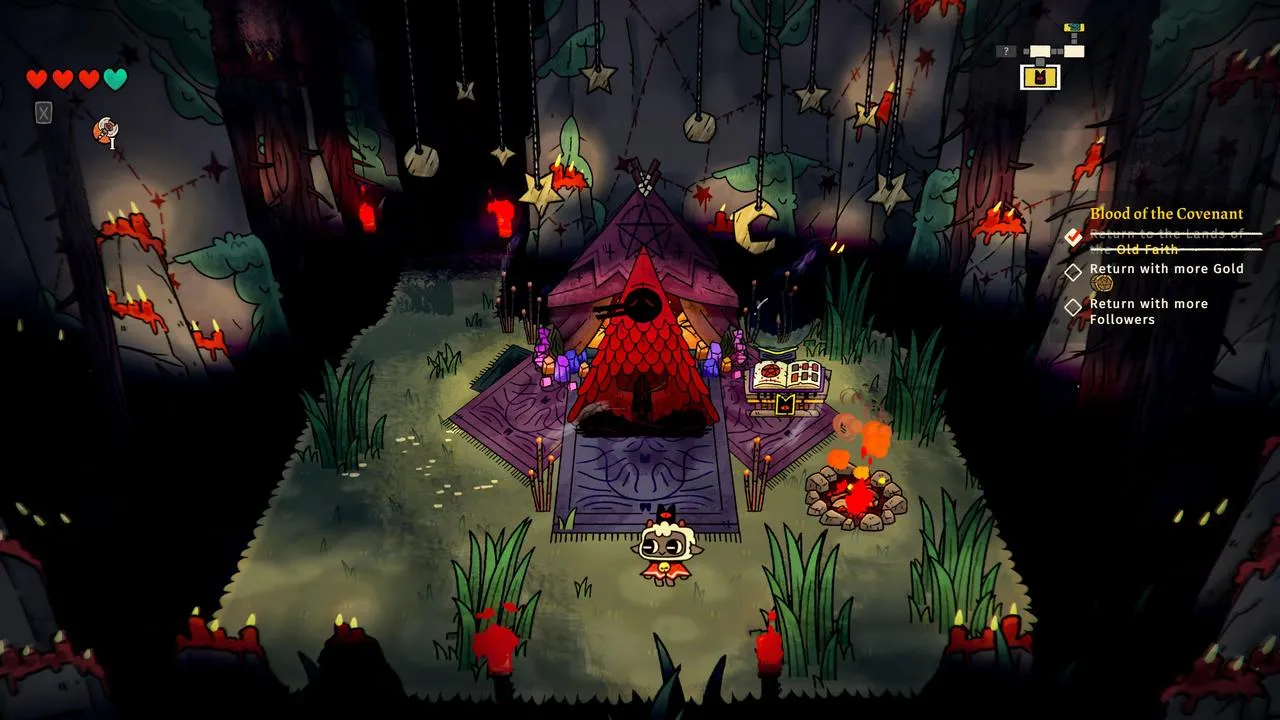 Alt: The Lamb exploring a dungeon with various resources scattered around.
Alt: The Lamb exploring a dungeon with various resources scattered around.
One key feature is the adjustable difficulty. Unlike many roguelikes, Cult of the Lamb allows players to tailor the challenge, making it accessible to those intimidated by the genre’s often punishing difficulty.
Building Your Flock: A Delightfully Dark Twist
The second half of the game involves managing your growing cult. This aspect of the game borrows from survival and farming simulators.
Recruited followers become loyal members of your flock, each with unique personalities and faith levels. They age, get sick, and eventually die, adding a layer of complexity to the management aspect.
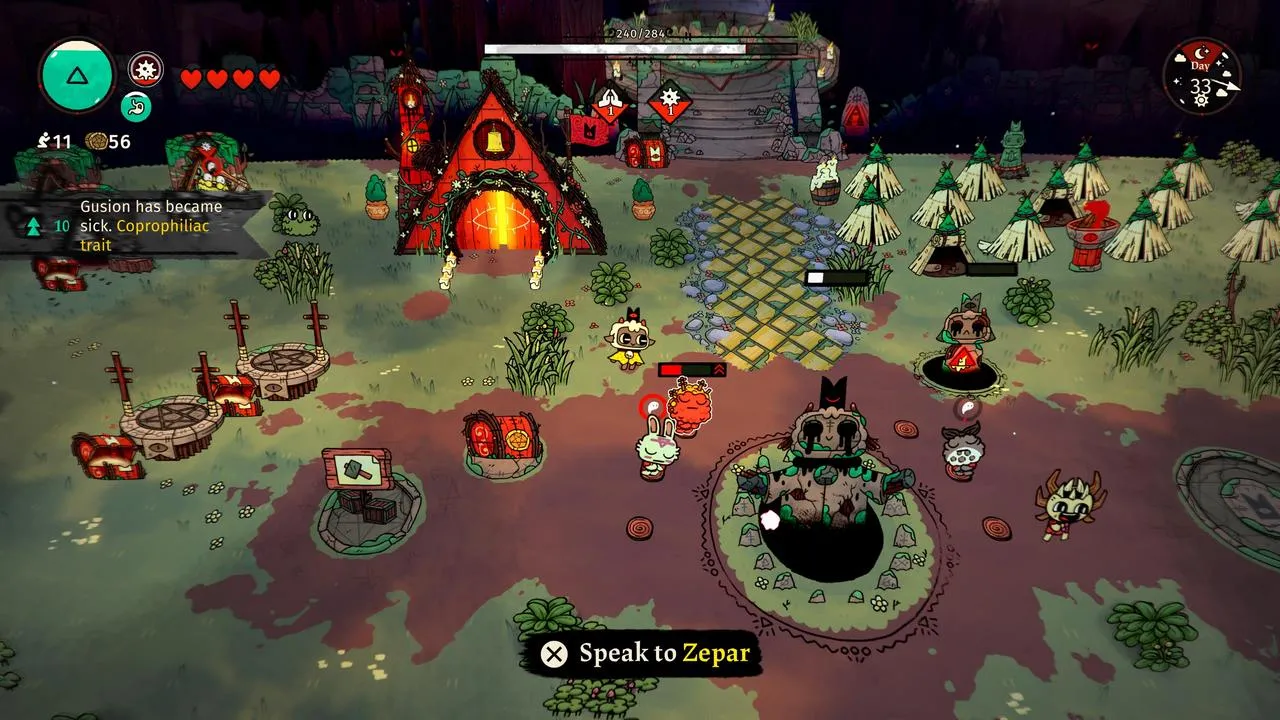 Alt: The Lamb preaching to a group of followers in a clearing with a large shrine.
Alt: The Lamb preaching to a group of followers in a clearing with a large shrine.
Followers can be assigned tasks like resource gathering, construction, farming, and crafting. You can even transform them into demonic companions to aid you in combat.
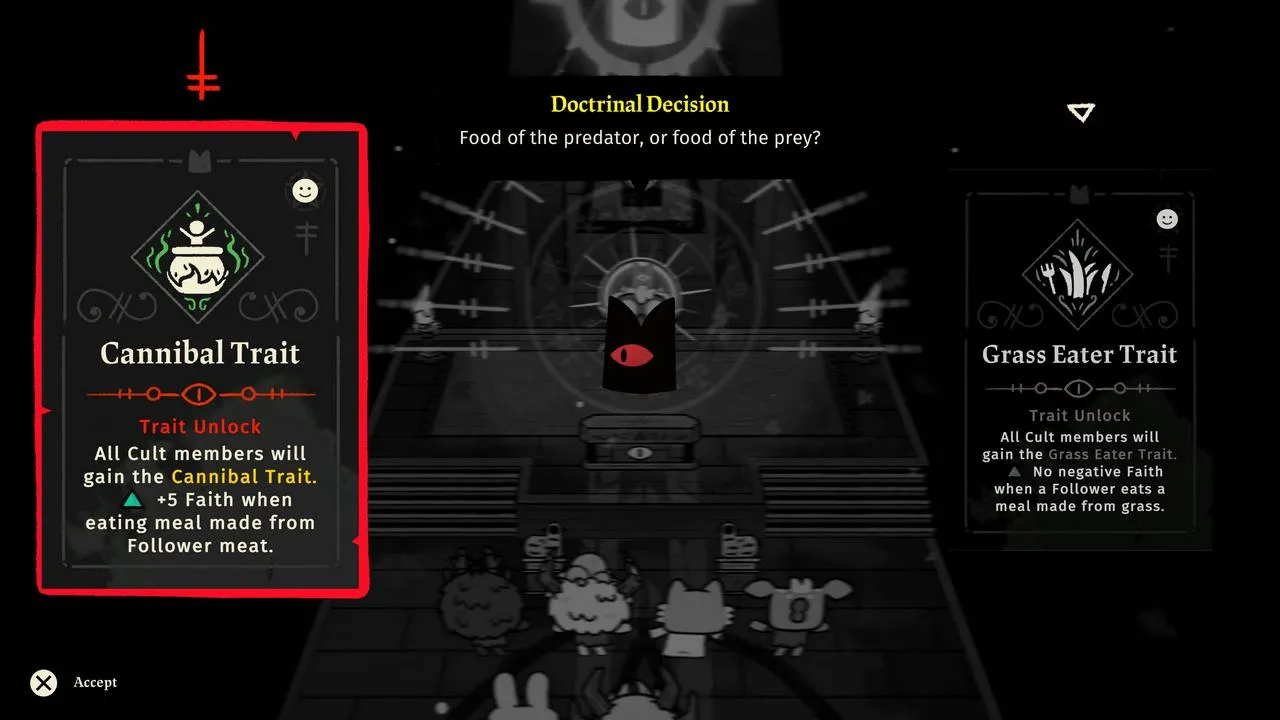 Alt: The Lamb performing a ritual in front of a group of followers.
Alt: The Lamb performing a ritual in front of a group of followers.
In return, you must care for your flock, ensuring they are fed, housed, and kept happy. You’ll perform blessings, deliver sermons, hear confessions, and fulfill individual requests.
Neglecting your duties, committing forbidden acts, or suffering repeated defeats in combat can lead to dissent, rebellion, and ultimately, the downfall of your cult.
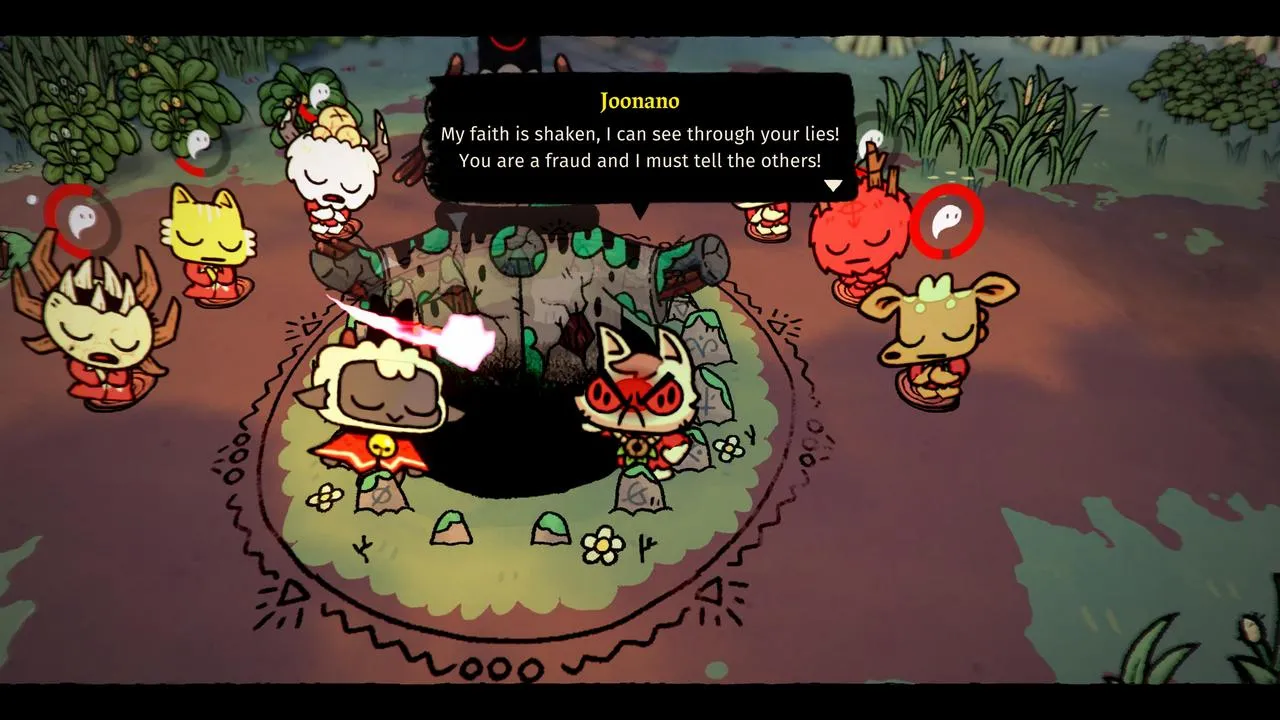 Alt: The Lamb interacting with a follower who is offering a gift.
Alt: The Lamb interacting with a follower who is offering a gift.
A Visual and Auditory Feast
Cult of the Lamb’s unique art style blends adorable, cartoonish characters with dark, unsettling themes, creating a memorable aesthetic.
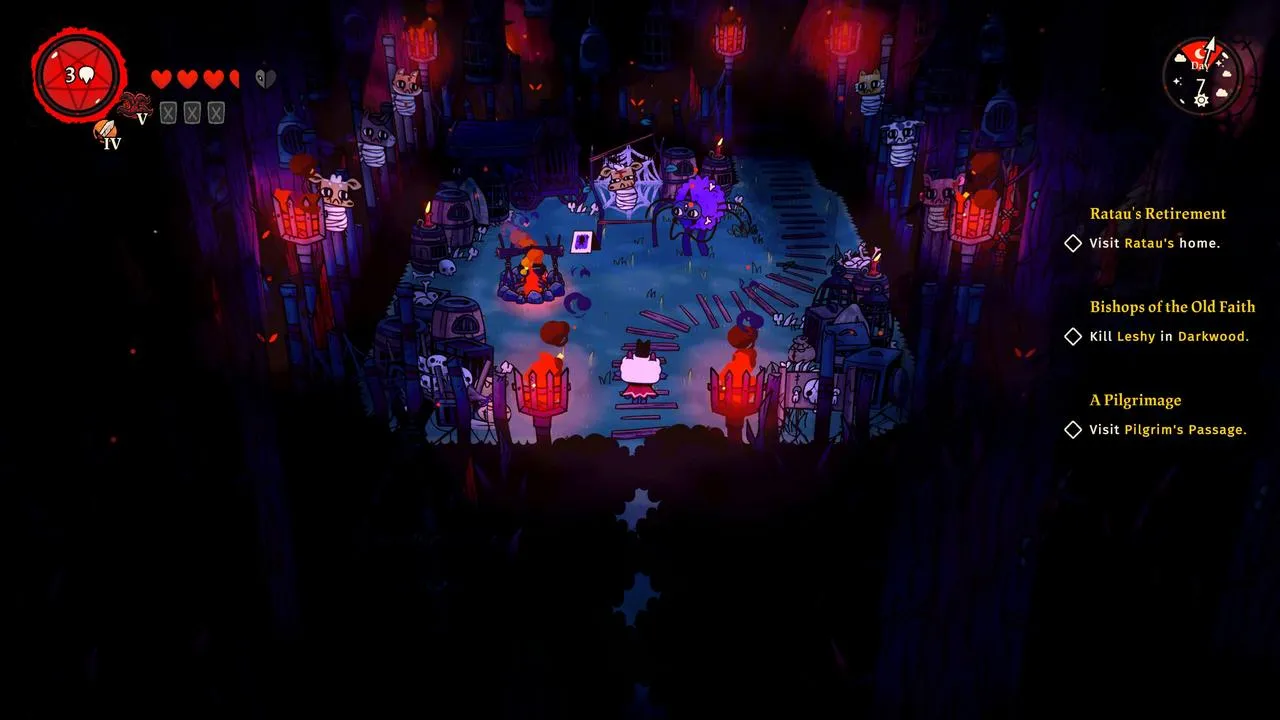 Cult of the Lamb
Cult of the Lamb
The game features a day-night cycle that influences gameplay, and all mechanics are interconnected, minimizing repetition and maximizing engagement.
 Cult of the Lamb
Cult of the Lamb
The soundtrack is another highlight, blending catchy electronic tunes with mystical undertones.
Room for Improvement
Managing a large number of followers can become cumbersome due to the limited follower management interface. Tracking individual tasks and statuses becomes challenging as your cult grows.
 Cult of the Lamb
Cult of the Lamb
Performance issues have also been reported on the Nintendo Switch version.
Conclusion
Cult of the Lamb delivers a unique and captivating blend of roguelike action and cult management simulation. While some minor issues exist, the engaging gameplay, charming art style, and captivating soundtrack make it a must-play for fans of indie games. Despite its dark themes, the game’s humorous approach and adjustable difficulty make it accessible to a wide audience.





Comments (0)